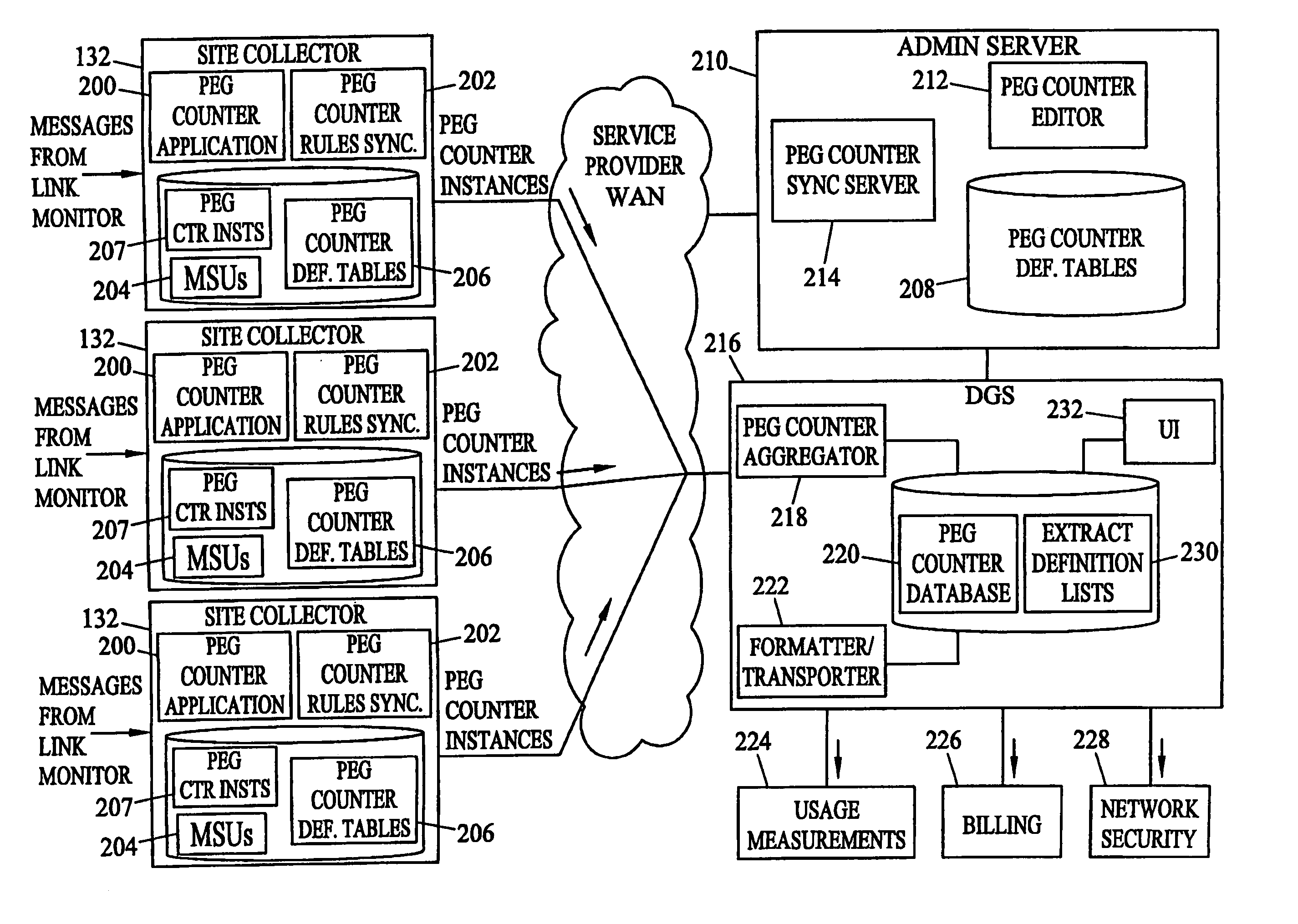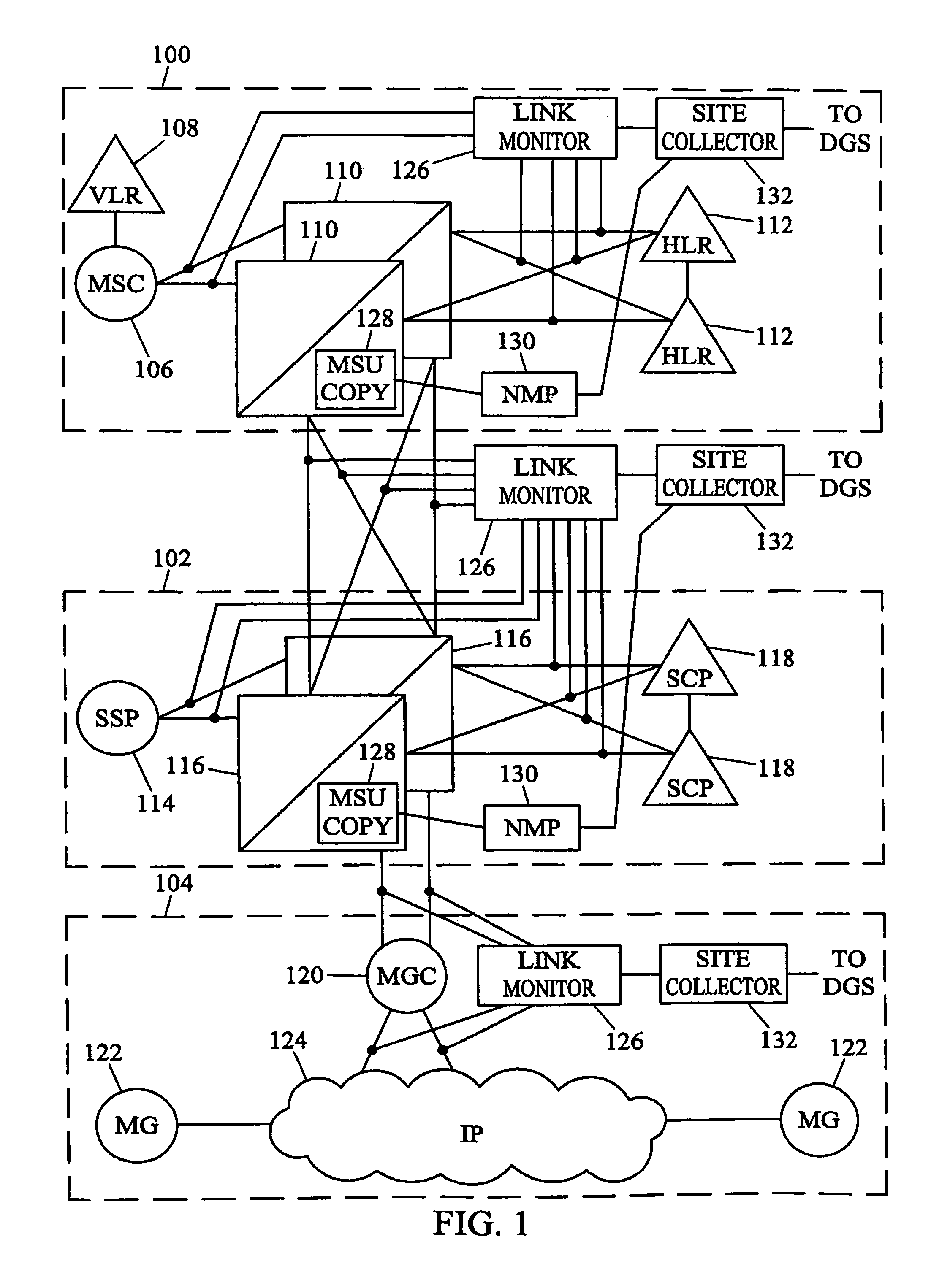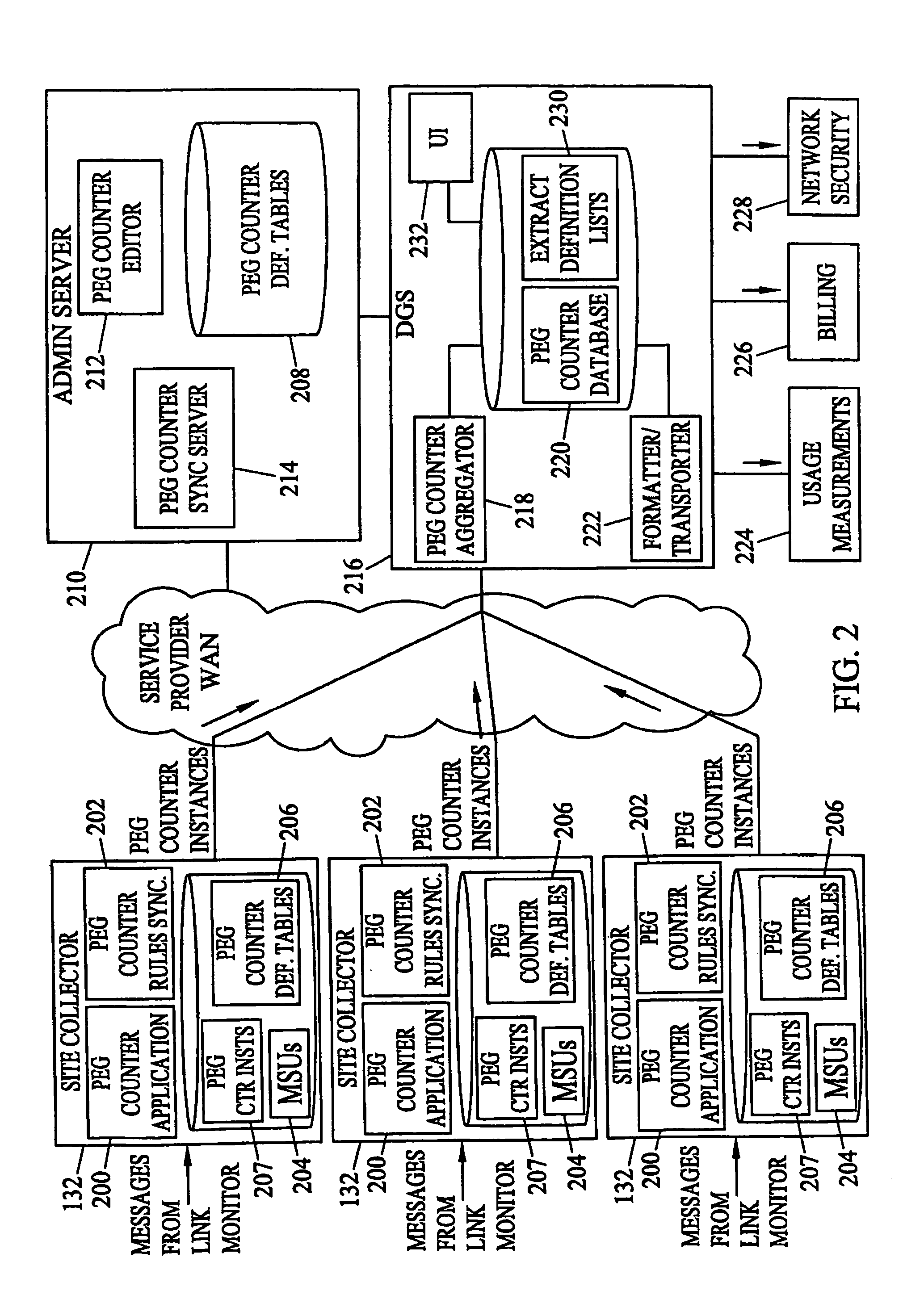Methods and systems for dynamic, rules-based peg counting
a technology peg counter, which is applied in the field of dynamic and rule-based peg counting methods and systems, can solve the problems of consuming bandwidth, reducing the bandwidth available for other services, and sending copies of all monitored messages across the network of a service provider, so as to reduce the time required to accumulate peg count values, reduce unnecessary bandwidth consumption, and reduce the effect of peg counter creation tim
- Summary
- Abstract
- Description
- Claims
- Application Information
AI Technical Summary
Benefits of technology
Problems solved by technology
Method used
Image
Examples
Embodiment Construction
[0027]As discussed above, the present invention includes method and systems for dynamic, rules-based peg counting. FIG. 1 illustrates an exemplary operating environment for dynamic, rules-based peg counting according to an embodiment of the present invention. Referring to FIG. 1, an exemplary telecommunications network includes various entities that generate and route signaling messages. In the illustrated example, the network includes a wireless component 100 for generating and routing signaling messages associated with wireless telecommunications, a wireline component 102 for generating and routing signaling messages associated with wireline communications, and an IP telephony component 104 for generating and routing signaling messages associated with IP telephony communications. Wireless component 100 includes a mobile switching center (MSC) 106, a visitor location register (VLR) 108, a signal transfer point (STP) pair 110, and a home location register (HLR) pair 112. MSC 106 ori...
PUM
 Login to View More
Login to View More Abstract
Description
Claims
Application Information
 Login to View More
Login to View More - R&D
- Intellectual Property
- Life Sciences
- Materials
- Tech Scout
- Unparalleled Data Quality
- Higher Quality Content
- 60% Fewer Hallucinations
Browse by: Latest US Patents, China's latest patents, Technical Efficacy Thesaurus, Application Domain, Technology Topic, Popular Technical Reports.
© 2025 PatSnap. All rights reserved.Legal|Privacy policy|Modern Slavery Act Transparency Statement|Sitemap|About US| Contact US: help@patsnap.com



